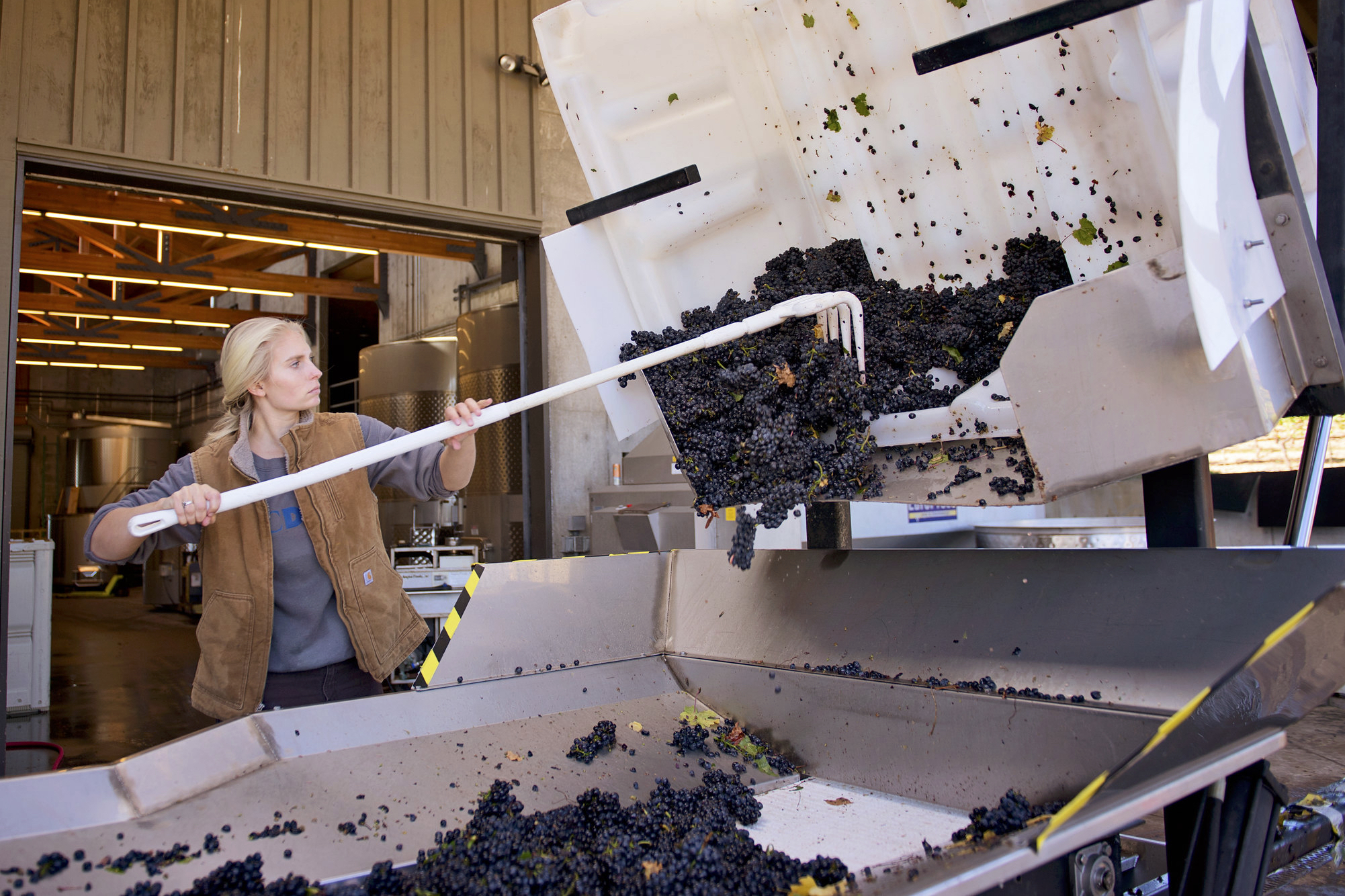Matching grapes to place
It takes a certain character to grow an Oregon grape for an Oregon wine. Character to honor the power of the land. Character to experiment, collaborate, and refine. That’s the story of grapegrowing in Oregon.
In the 1850s, Peter Britt first planted Mission grapes in the Rogue Valley, but by the 1870s he had experimented with more than 200 American and European varieties. In the 1960s, David Lett and Charles Coury famously defied convention by planting Pinot noir in the Willamette Valley; but they also cultivated Pinot gris, Chardonnay, Semillon, Sylvaner, and more. Today, Oregon’s winegrowers continue to experiment in search of the perfect match of grapes to place.
With dozens of micro-climates and soil types throughout the state, Oregon’s grapes—from more than a thousand vineyards—are as distinct as the places from which they hail.

Pinot noir
Oregon’s flagship variety, this thin-skinned grape thrives in cool sites throughout the state, with particular prominence in the Willamette Valley. Pinot noir spans the full spectrum between red and black fruit, frequently accented by a pronounced spiciness that suggests cinnamon, sassafras or mint. Oregon Pinots are usually fresher with higher acidity and often more intensely fruity notes.
Most commonly found in the Willamette Valley and Southern Oregon, Pinot noir represents 59% of Oregon’s planted acres.

Pinot gris
Usually fragrant and mildly floral with lightly lemon-citrus flavors, Pinot gris can be tangy and light, or quite rich, round, and full bodied. Oregon Pinot gris tends to follow an Alsatian style of vinification creating expressive, complex wines with aging potential.
Most commonly found in the Willamette Valley and Southern Oregon, Pinot gris represents 14% of Oregon’s planted acres.
Chardonnay
Exploding in popularity in the Willamette Valley and around Oregon, Chardonnay produces wine across the spectrum from creamy to fresh and tart. Often redolent of apples, lemons, peaches or tropical fruits, Oregon Chardonnay can be found in many styles from many climates.
Most commonly found in the Willamette Valley and Rogue Valley, Chardonnay represents 7% of Oregon’s planted acres.

Syrah
Commonly known as a warm-climate variety, when grown in Oregon’s moderate regions Syrah balances rich complexity, depth, and acidity. The wines are often intense, with deep violet, nearly black color, chewy texture and richness, and aromas that tend to be more spicy than fruity.
Most commonly found in the Columbia Valley, Southern Oregon, and Snake River Valley, Syrah represents 4% of Oregon’s planted acres.
Cabernet Sauvignon
Grown in Oregon’s moderate-to-warm regions like the Columbia and Rogue Valleys, this thick-skinned grape achieves bold, tannic character balanced by acidity, resulting in structure and ageability. This variety, frequently aromatic with an attractive finish, is often blended with lower tannin, more “rounded” grapes to help round out the mid-palate.
Most commonly found in the Columbia Valley, Rogue Valley, and Snake River Valley, Cabernet Sauvignon represents 4% of Oregon’s planted acres.

Riesling
Oregon Riesling is most often dry or off-dry with a powerful and distinctive floral and apple-like aroma. Riesling frequently mixes in mineral elements from its vineyard source and is often described as “racy.” Other frequently encountered flavors include peach, apple, and pear.
Most commonly found in the Willamette Valley, Columbia Valley, Rogue Valley, and Snake River Valley, Riesling represents 1% of Oregon’s planted acres.
And literally dozens more…

It’s hard to know exactly how many grape varieties are currently growing in Oregon. It’s at least 100, probably much more. Oregon continues to make important contributions to the dinner table and international discourse with Tempranillo, Pinot blanc, Gamay, Sauvignon blanc, Rhône-style blends, sparkling wines, rosé, and many, many more.
